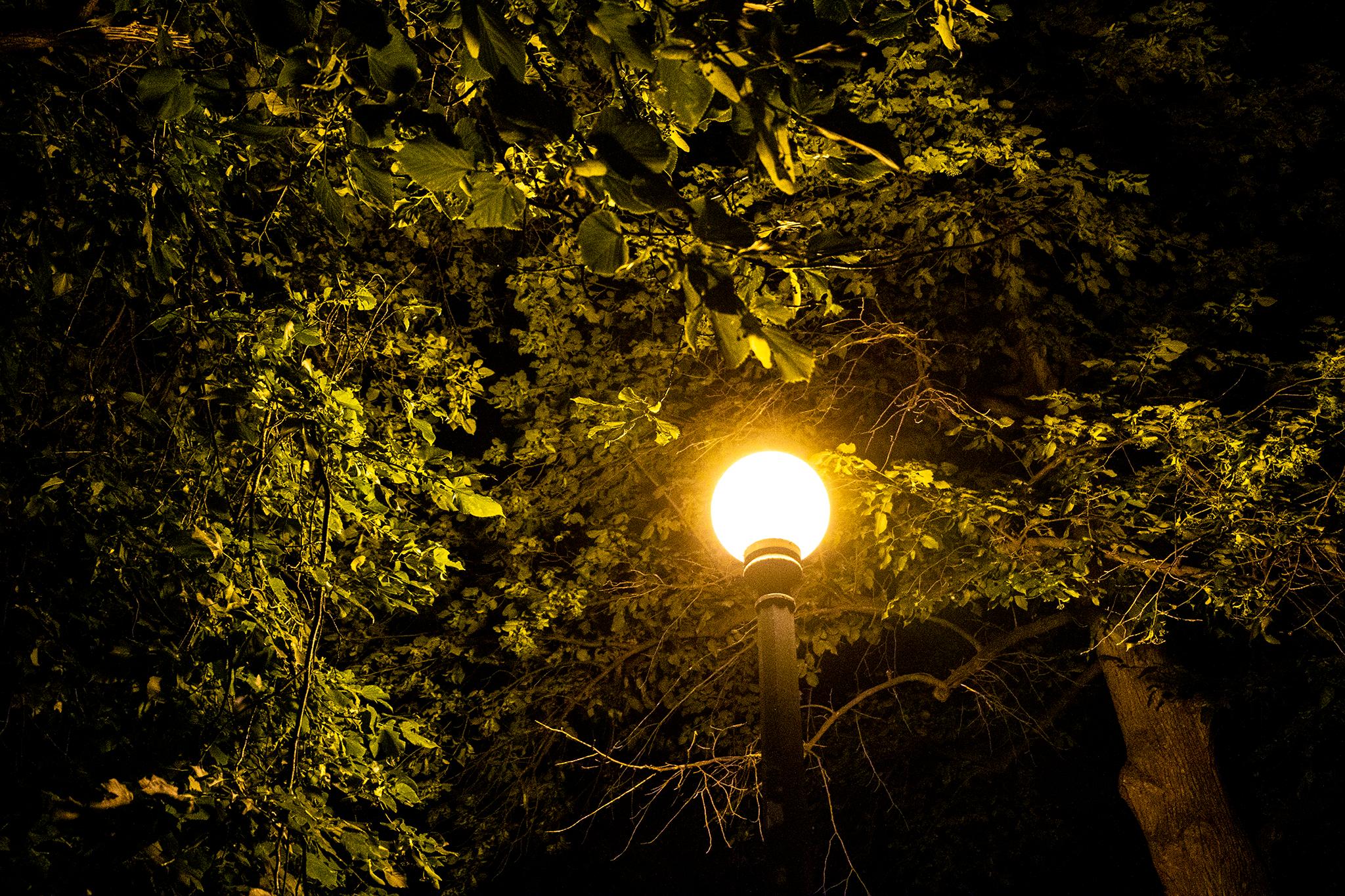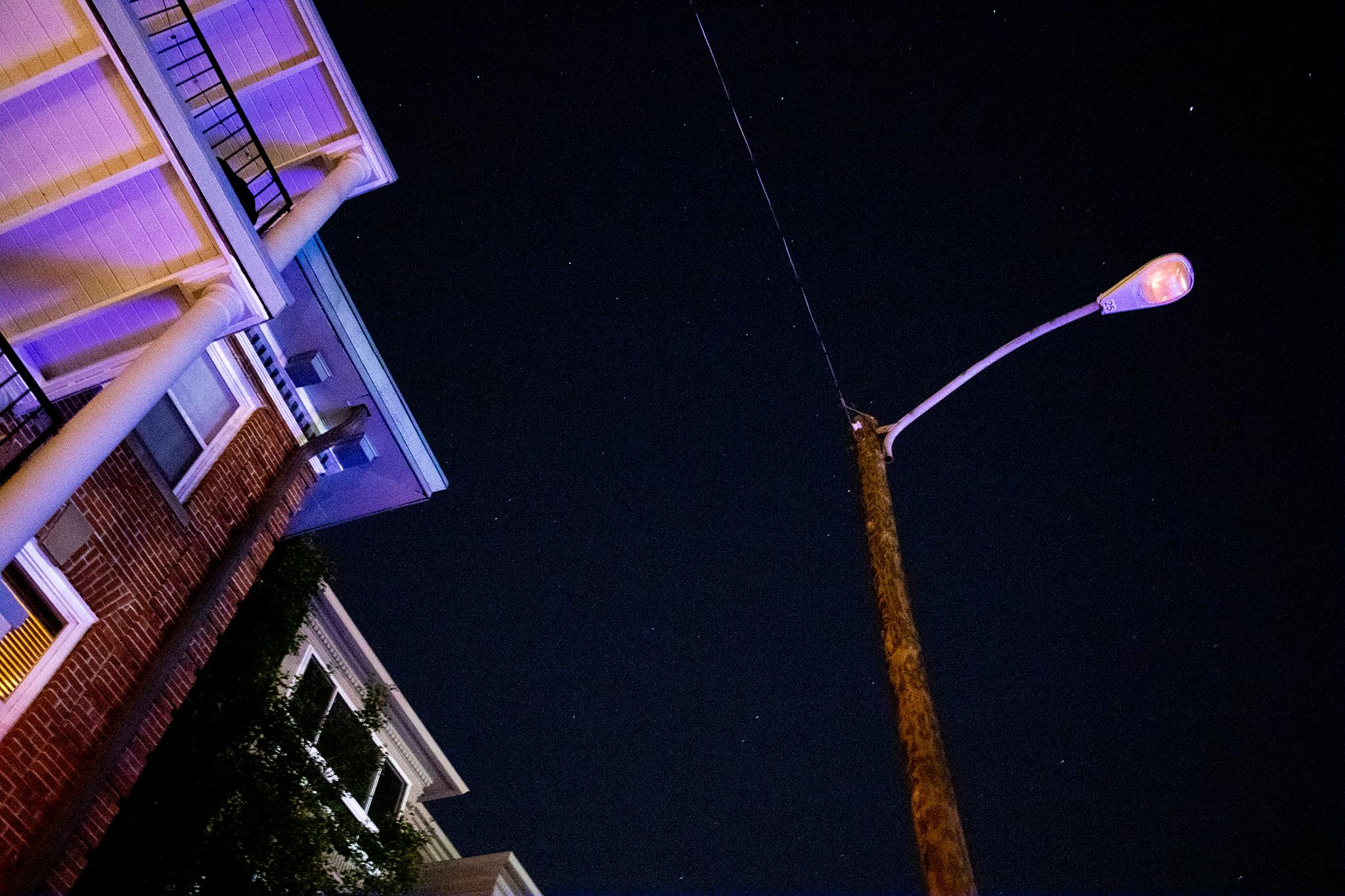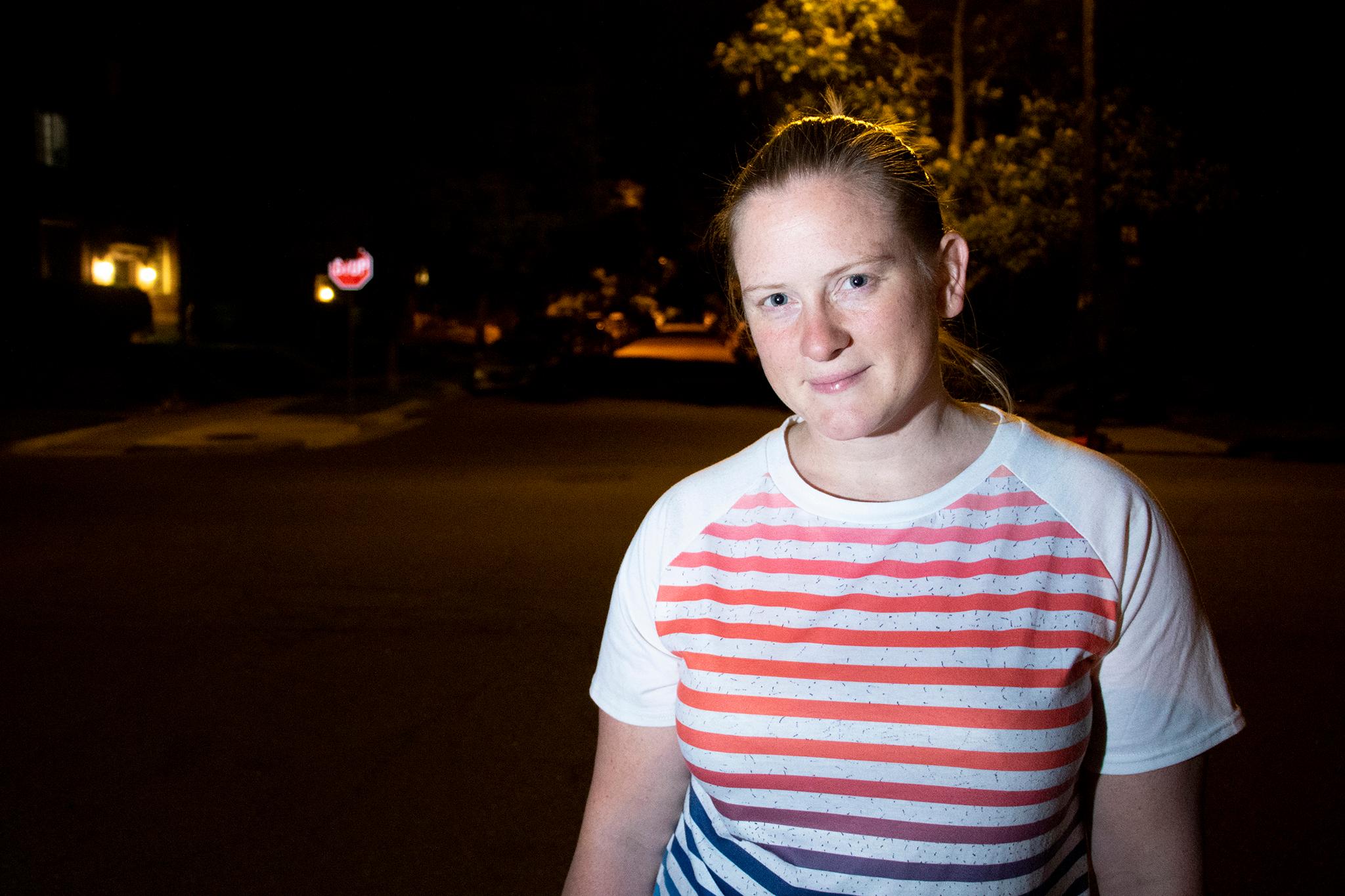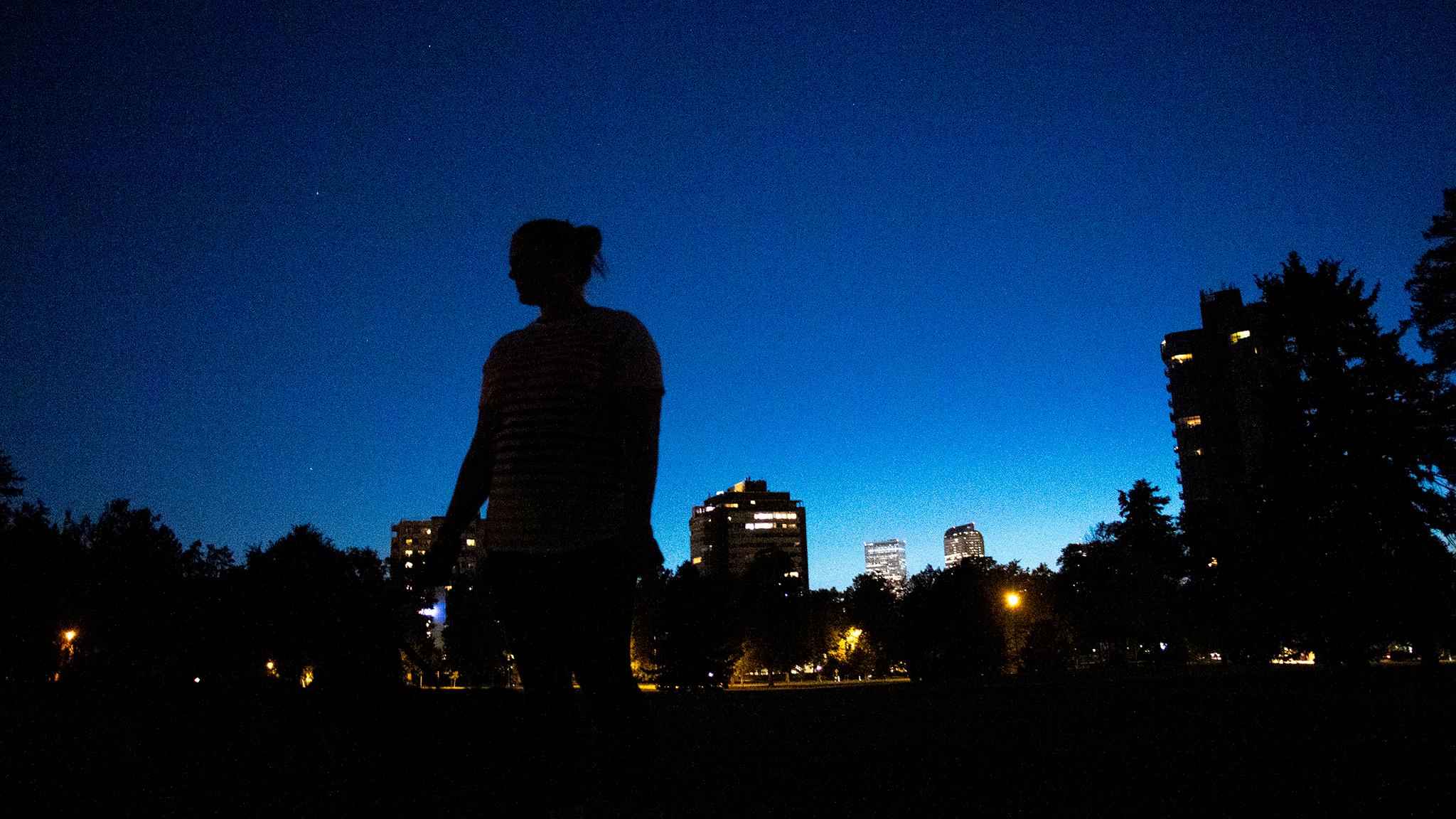Jamie Perkins has to make a lot of decisions when she leaves her Capitol Hill apartment at night.
"Your main goal at night is don't get assaulted," she said. "So you play off a calculus of: Do I take the most direct route somewhere and minimize the time that I'm out? Or do you walk around to find the safest place?"
She moved to the neighborhood from East Colfax about a year ago, and chose it specifically because she was giving up her car. Generally, she said, the area is great for someone who walks to nearly every resource she needs to access. But after dark, things become more complicated.
Perkins has worked for organizations like Bicycle Colorado and Denver's Transit Alliance, and she says she thinks about urban design issues all the time. For her, the issue of safety at night revolves around cities built for cars and designed from a male perspective.
She gave me a walking tour of light fixtures in the city's Cheesman Park and Capitol Hill neighborhoods. As we walked, she pointed out that the modern streetlights are often perched high above trees and intentionally extended past sidewalks to illuminate streets. This is a contrast to the historic globe lamps lining Cheesman Park and Humboldt Street, which are lower. She calls those "street furniture," and said they do better service to pedestrians. She'd like to see more of that in Denver's future.

But the idea that Denver's streets may be too dim for women to walk comfortably after dark is not limited to Perkins' design-oriented mind. Last weekend, I conducted a (very informal) Twitter survey to see if it's a thought that resonates with others.
The first question was simple: "Is lighting around the city adequate for walking to your after-dark adventures?"
Of 274 people who voted, 80 percent said "no."
I asked that only women in Denver answer the survey, but I can't actually confirm whether people abided the request. Still, as votes came in over four days, the 80:20 ratio stayed consistent.
The second question was: "Have you ever avoided a stretch of sidewalk at night because it was too dark?"
Of 173 people who responded, 91 percent said "yes."
The final question came from a young woman Perkins and I encountered early in our walk. We stopped Noga Osin to ask about the "street furniture" she and a friend were walking beneath. When we asked if she ever feels unsafe walking at night, she pointed to a can of pepper spray hanging from her belt.
"This is a level of readiness that I pull out in creepy places," she said.
One-hundred-seventy-six people responded to the question: "Have you ever carried a weapon when you walk at night? Could be pepper spray or a sharp keychain thing."
Sixty-four percent said "yes," and multiple women responded.
"Keys always out in defensive mode. I call my husband and let him know my ETA so he's waiting and watching for me," one wrote.
Lighting, Perkins said: "It's a women's issue."
Perkins became attuned to streetlights when she tried to get one fixed.
She was living in Denver's East Colfax neighborhood and taking the bus a lot. According to city guidelines, local streets in Denver usually have just one streetlight midway down each block, with more at intersections. The lamp on Perkins' block went out one day, rendering much of her street dark.
"I leave my house, so that was a problem for me," she said.
She contacted the city, but she was instructed to call Xcel Energy since the utility owns all of the city's streetlights and is responsible for their maintenance. It was difficult for her to get the company to listen. She said she called "repeatedly," but nobody came out to fix the problem. It wasn't until she rallied her neighbors to inundate Xcel with requests that the lamp was repaired, weeks after her initial calls.
A spokesperson for Xcel said the utility got about 6,000 calls and online requests to fix its streetlights in Denver in 2018 alone. An analysis of 311 calls to the city showed the hotline receives between 1,000 and 2,000 calls on the subject each year. Most of those are labeled as "street light" issues, as opposed to "park lights."
The problem, Perkins said, is more than slow repairs. A perfect city has room for things to break within it. But because Denver's actual streets typically have one fixture midway through the block, one dead bulb makes a big difference.
"If that streetlight went out, you're screwed on this block," she said, pointing down a stretch of Marion Street on our walk. "That's why you build in redundancy."


Central Denver's tree canopy also causes some problems. Even where streetlights were bright and working, she pointed to many spots where sidewalks were cast in shadow because branches blocked their glow.
"They're bright, so they give you a lot of light," she said during the tour, but "it doesn't really matter."
She, like the majority of those surveyed, would intentionally cross the street to avoid such places.
Lighting, of course, is not the whole issue.
Many women who responded said they deal with harassment all the time, both day and night. Denverite has documented the broad side of this issue. In our reporting, there was an obvious disconnect between women and men's perspectives. Men seemed not to realize that women felt regularly terrorized by aggressive behavior.
"I have nearly always been harassed during daylight, honestly," Leah Charney wrote on Twitter. "The dude who asked me for directions and dropped his pants to masturbate as I was explaining how to get from 20th to Colfax, for example. I say nearly because it's probably happened at night/in dark but I can't recall."
On the other hand, Caitlin Cuneo, who works downtown and often walks to her home near Union Station, said nightfall changes everything for her. Especially during winter's shorter days, she's likely to ask her husband to pick her up rather than venture out of the office alone.
"It feels like the risk goes up when you're walking around in the dark because it's harder for you to see the people around you," she said. "It would be easier to be violent because there are fewer people out in the street."
This gets to a related factor that came up as people responded. Density plays into nighttime safety just as much as illumination.
A study from the University of Pittsburgh's economics department found that higher densities were correlated with lower crime rates, and that mixed-use blocks tended to see fewer crimes than those that were completely commercial.
Brooke Baker wrote on Twitter that she'd rather walk on Colfax Avenue at night, despite the fact that she felt it would increase her chances of being harassed: "At least if something actually bad happens, there are witnesses."
For Cuneo, a combination of poor lighting and low density is a no-go.
"Probably the scariest thing is seeing a stretch in front of you where there are no other visible people and it's dark," she said. "There's definitely an instinct being a woman because you're so used to things that do happen that may feel little, but they're still upsetting. And then, you think it would have been really easy for it to be worse."
Nikki Biefel pointed out that this whole discussion is underpinned by a larger cultural problem.
"We wouldn't need weapons if men weren't attacking us. Light is not the issue," she said.
Denver is revamping its lighting systems, but big change will be slow.
The city has embarked on a few projects that are enhancing its streetlights. Public Works and Xcel have begun upgrading fixtures to LED lamps, which are brighter and more efficient (though some folks we spoke to in Berkeley didn't notice).
Denver's Vision Zero Action Plan, a guide to lowering pedestrian deaths as related to vehicle traffic, stipulates two corridors per year between 2018 and 2019 will receive enhancements "to improve visibility." Between 2020 and 2023, that will rise to three corridors per year. They've begun by focusing on streets that see the most injuries, like Federal Boulevard, so smaller streets like those gridding Capitol Hill aren't likely to be included.
Nancy Kuhn, a spokesperson for Public Works, said the city doesn't currently have plans to "install pedestrian lighting" like Perkins' "street furniture."
"It would be an expensive undertaking," she wrote in an email, though she did point out that individual projects like the 39th Avenue Greenway do include provisions for pedestrian-friendly lighting.
"Historically, in Denver, pedestrian and sidewalk lighting has been installed and maintained by individuals and business districts," she said.

Perkins said safety at night is a systemic problem. It's the result of cities designed from a man's perspective, infrastructure that revolves around cars and, biggest of all, a world where women fear men at any time of day or night.
"Like a lot of structural issues, we can choose to say, 'Well, we can't fix it because we can't get to the root of the problem," she said. "In the meantime, you should treat the symptoms."













